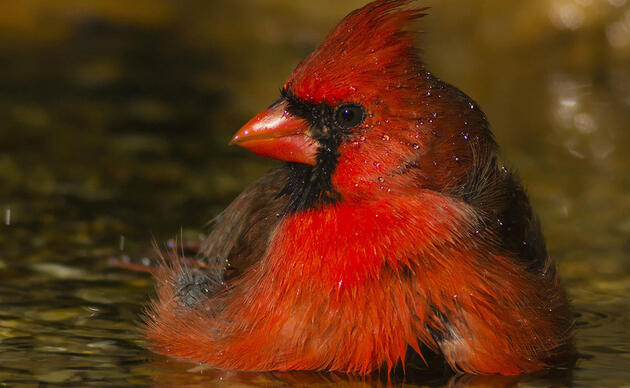The following story was excerpted from 'Corkscrew,' the annual magazine of Corkscrew Swamp Sanctuary.
Q: Where were you before you took over the helm at Corkscrew Swamp Sanctuary?
Korte: Prior to Corkscrew Sanctuary, I was a Natural Resource Management Specialist with the U.S. Forest Service. In this position, I spent two years working with the Agency for International Development (USAID). Based in the capitol city of Monrovia, in the west African country of Liberia, we worked with local communities to develop forest management skills to conserve tropical rainforests. This included biodiversity conservation of the forest, building local institutions to govern forest use, and developing economic opportunities to generate revenue from forest activities.
From 2010 - 2016, I was the director of the Smithsonian Institution’s Gabon Biodiversity Program. In the central African country of Gabon, I collaborated with nonprofit organizations, large multinational corporations, and government representatives. We addressed complex conservation issues, from human-wildlife conflict to implementing biodiversity action plans in critical conservation areas.
Q: What sets Corkscrew Swamp Sanctuary apart from other conservation lands in Florida?
Korte: The Sanctuary is a model for how people can work together to protect and manage wetlands. It has a long history of conservation, from protecting birds hunted for their feathers to community members pooling funds to purchase our land in order to save old-growth cypress from logging. Today, the Sanctuary is the heart of the Corkscrew Regional Ecosystem Watershed, where people continue to purchase and manage land to conserve water resources.
Corkscrew Sanctuary is a mosaic of wetland habitat from old growth cypress to restored marshes. We are managing wetlands in ways that people can apply to wetlands in their backyards, communities, counties, and across Florida. Our goal is to be good neighbors with our fellow citizens in the Corkscrew Island Neighborhood, Collier County, Lee County, and Florida. Our ability to maintain wetlands is a positive influence on the entire watershed, from immediate benefits of water sources to setting an example for how people can manage resources in their communities. We would like to be a model in Florida, in the United States, and across the globe.
Q: What do you see as Corkscrew’s top priorities?
Korte: The top priority is land management. We want to manage Corkscrew habitat to benefit birds, wildlife, and people. To be a model for conservation, we need to start with good management of habitat in the best way possible. In 1954, Audubon was entrusted with the care and responsibility of the land that the Naples community came together to protect. We need to manage this land well.
To do this, we rely on the technical ability of our land management team to plan and implement strategies to keep good habitat good and hammer away at invasive species. Our research team monitors and evaluates the results of our land management practices to ensure we are on track with our conservation goals. Finally, the Blair Audubon Visitor Center, with our program of education activities, becomes our hub for sharing our conservation message with the public. We want our visitors to be inspired by the nature and wilderness they see at the Sanctuary and be informed to make good decisions on natural resources.
Q: What are you most proud of at Corkscrew?
Korte: I am most proud of people for what they have done and continue to do for Corkscrew Sanctuary. Everyone, including staff, volunteers, members, board members, and donors, are passionate and committed to the Sanctuary. People love the mystery of the swamp and will do anything for it. People want to be here, contributing their time, talent, skills, and experience to help us be successful in our mission.
Q: When people visit the sanctuary, what do you want them to walk away with?
Korte: I want people to gain an appreciation for the natural beauty of the Sanctuary and to be inspired to make sound decisions regarding natural resource management. I would like people to be awestruck by nature and commit to the conservation of wetlands.
Stay in Touch!
Show your love of birds today. Subscribe to receive email updates about Audubon's conservation work and hear about opportunities to help birds in your area or nationwide.




